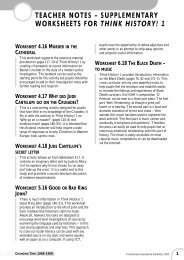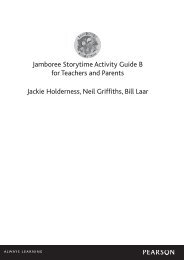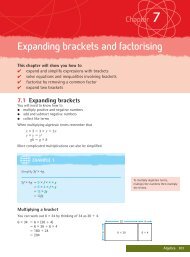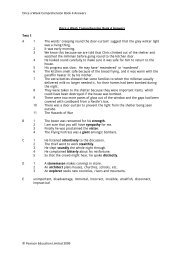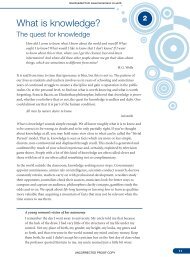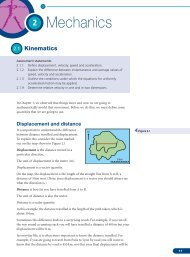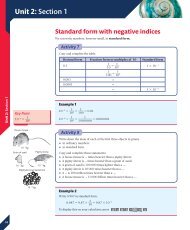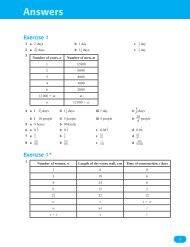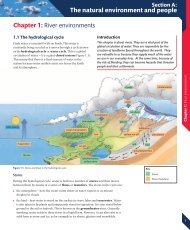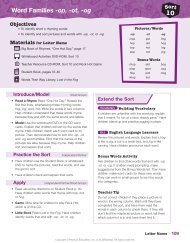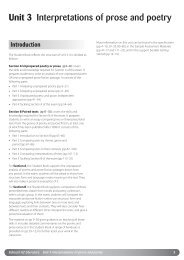Chapter 1: Hardware - Pearson Schools
Chapter 1: Hardware - Pearson Schools
Chapter 1: Hardware - Pearson Schools
You also want an ePaper? Increase the reach of your titles
YUMPU automatically turns print PDFs into web optimized ePapers that Google loves.
<strong>Chapter</strong> 1: <strong>Hardware</strong><br />
Data<br />
input<br />
Process<br />
Data output<br />
Figure 1.2 Flow of data<br />
Program<br />
instructions<br />
What is a computer?<br />
A computer is an electronic machine that can follow a set of instructions to input,<br />
process, store and output data.<br />
Let’s look at each part of that sentence.<br />
<br />
<br />
<br />
<br />
<br />
<br />
<br />
ELECTRONIC – Computers are electronic devices. They use tiny electric<br />
currents, flowing through circuits, to do their operations.<br />
MACHINE – This is a device to do work easily.<br />
INSTRUCTIONS – The computer must have a sequence of instructions, given<br />
in a program. The computer will follow this sequence, so the program is<br />
essential in getting the computer to do its job.<br />
INPUT – is when data is typed in or otherwise entered into the computer.<br />
PROCESS – The computer processes data, just as you could process your<br />
ingredients to get a tasty cooked meal. Think of the computer program as a<br />
recipe with instructions to follow. Raw food goes in as input and, after<br />
processing, out comes the well-baked dish!<br />
STORE – A computer not only processes data, but can store or save it too.<br />
OUTPUT – This is when the computer displays text or graphics on the screen,<br />
prints, plays sounds or otherwise communicates to the user.<br />
DATA – This is the raw information to be processed – just like the raw food.<br />
A computer is a programmable machine. Basically it can do whatever it is<br />
programmed to do. And notice carefully that it is just a machine. It automatically<br />
follows the set of codes or instructions given in a program.<br />
What is the difference between data and information? Data means raw, unprocessed<br />
information. It could be numbers, or words and letters. Information is data that<br />
people understand. In order to understand data, you may have to interpret it.<br />
For example:<br />
The number 10092004 is data.<br />
This can be interpreted as:<br />
A date 10/09/2004<br />
A sum of money $100,920.04<br />
The interpreted data is information. That is, the date or the sum of money is<br />
information.<br />
We need to be careful how we interpret data as it can mean quite different things<br />
when it is information.<br />
Typically, a computer inputs data, processes it following program instructions, and<br />
outputs information. This is often a cyclical process with the user inputting data,<br />
viewing the output, and responding to the output by inputting more data. While<br />
the data is being processed, data can be retrieved from backing storage or saved on<br />
it. This is interactive processing and it provides the user with an immediate<br />
response. This can be like an active two-way conversation between the user and<br />
the computer.<br />
2



